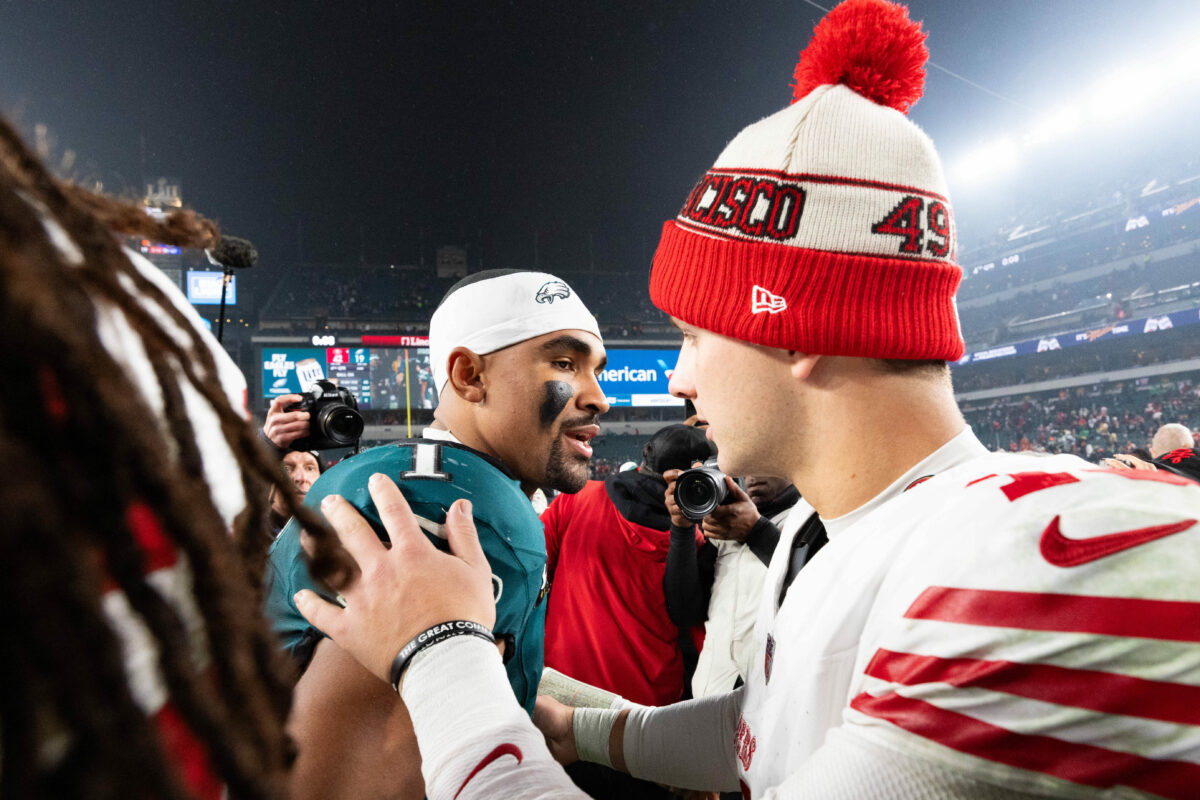There’s a lot to unpack about Brock Purdy’s 2023. He is, indeed, the NFL’s most efficient quarterback. He does lead the league in yards per attempt and yards per completion. Each time he drops back to throw the ball, he’s effectively good for a first down (9.7 yards per pass).
But he’s also a low wattage offensive custodian who has thrown fewer deep balls than Zach Wilson (32 to 30, per SIS). His average air yards per pass (7.9) is only 14th-deepest in the NFL. His 69.9 percent on-target throw rate is 26th-best among starters, just ahead of Kenny Pickett. He’s heavily buoyed by a core of playmakers whose 6.6 yards after catch average is by far the highest of any team this fall.
Despite all this, he’s still the NFL’s most impactful quarterback, according to advanced stats. In fact, no one else is quite on his level.
Let’s talk about those stats. Expected points added (EPA) is a concept that’s been around since 1970. It’s effectively a comparison between what an average quarterback could be expected to do on a certain down and what he actually did — and how it increased his team’s chances of scoring. The model we use comes from The Athletic’s Ben Baldwin and his RBSDM.com website, which is both wildly useful AND includes adjusted EPA, which accounts for defensive strength. It considers the impact of penalties and does not negatively impact passers for fumbles after a completion.
The other piece of the puzzle is completion percentage over expected (CPOE), which is pretty much what it sounds like. It’s a comparison of all the completions a quarterback would be expected to make versus the ones he actually did. Like EPA, it can veer into the negatives and higher is better. So if you chart all 31 primary quarterbacks — the ones who played at least 208 snaps in 13 weeks — you get a chart that looks like this:

Top right hand corner is good. Bottom left corner is bad. Try splitting those passers visually into tiers and you get an imperfect eight-layer system that looks like this:

These rankings are sorted by a composite of adjusted EPA and CPOE to better understand who has brought the most — and the least — value to their teams across the small sample size. It’s not a full exploration of a player’s value, but it’s a viable starting point. Let’s take a closer look.
